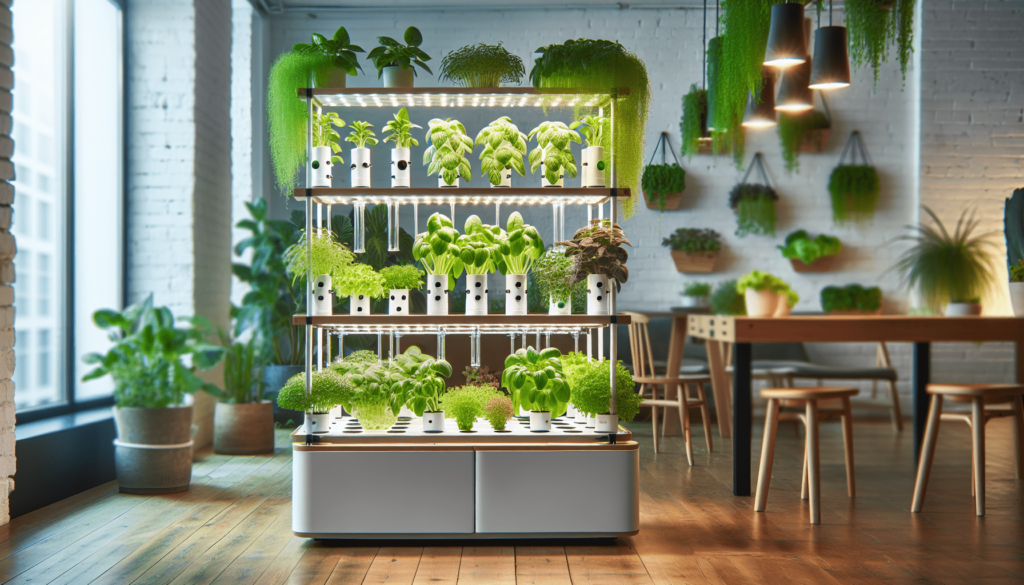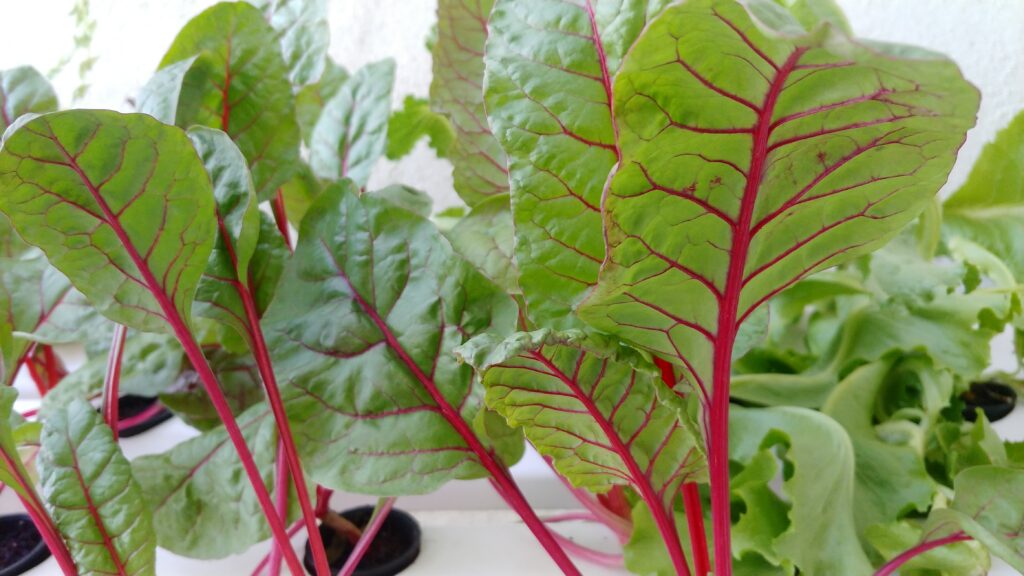Maintaining a hydroponic system doesn’t have to be overwhelming or time-consuming. When it comes to the daily and weekly upkeep of your hydroponic system, a little care goes a long way. From monitoring nutrient levels to checking pH levels and ensuring proper airflow, these routine tasks keep your plants thriving. By making maintenance an integral part of your gardening routine, you’ll enjoy the benefits of a healthy and productive hydroponic system.
Checking and Adjusting Nutrient Solutions
Checking pH levels
Maintaining the proper pH levels in a hydroponic system is crucial for the health and growth of your plants. To check the pH levels, you will need a pH test kit or a pH meter. Simply take a small sample of your nutrient solution and add the testing reagent or probe the meter into it. The ideal pH range for most hydroponic plants is between 5.5 and 6.5. If the pH is too high or too low, you will need to adjust it accordingly.
Checking nutrient levels
In addition to pH levels, it is essential to regularly check the nutrient levels in your solution. Each plant has different nutrient requirements, so it is important to follow the instructions on your nutrient solution package. Using a nutrient testing kit, measure the concentration of nutrients in your solution. If the levels are too low, you will need to add more nutrients. On the other hand, if the levels are too high, you may need to dilute the solution with fresh water.
Adjusting pH levels
If you find that the pH levels in your nutrient solution are not within the optimal range, it is necessary to make adjustments. To lower the pH, you can add a pH down solution or use food-grade phosphoric acid. For raising the pH, a pH up solution or potassium hydroxide can be used. It is important to make gradual adjustments and retest the pH after each addition until the desired level is achieved. Keep in mind that different nutrient solutions may require different amounts of pH adjustment, so always refer to the product instructions.
Adjusting nutrient levels
If your nutrient levels are too low or too high, it is crucial to make adjustments to ensure your plants receive the necessary nutrients for healthy growth. To increase the nutrient levels, you can add more concentrated nutrient solution to your reservoir. If the levels are too high, you can dilute the solution with fresh water. It is important to follow the recommendations on the nutrient solution package and make small adjustments at a time to prevent nutrient imbalances.
Monitoring Water Levels and Temperature
Checking water level
Regularly monitoring the water level in your hydroponic system is essential to ensure your plants have an adequate supply of water. Inspect the water level in the reservoir and make sure it is at the appropriate level for your specific system. If the water level is too low, add more water to maintain the desired level.
Monitoring water temperature
Water temperature plays a crucial role in the health and growth of hydroponic plants. Most plants thrive in water temperatures between 65°F and 75°F (18°C to 24°C). Invest in a water temperature meter or thermometer to monitor the water temperature regularly. If the temperature is too high, you can use ice packs or a water chiller to cool the water. On the other hand, if the temperature is too low, a water heater or an aquarium heater can be used to warm the water.
Inspecting and Cleaning the System
Inspecting for clogs or leaks
Regular inspections are essential to ensure the smooth operation of your hydroponic system. Check all the tubing, pipes, and fittings for any clogs or leaks. Clogs can restrict the flow of water and nutrients, leading to stunted growth or even plant death. If you notice any clogs, use a pipe cleaner or a small brush to remove the debris. Leaks should be repaired promptly to avoid water wastage and potential damage to your system.
Cleaning the reservoir
The reservoir is the heart of your hydroponic system, and it is important to keep it clean and free from debris. Regularly drain and clean the reservoir to prevent the buildup of algae, mineral deposits, and other contaminants. Use a mild cleaning solution or a hydrogen peroxide solution to thoroughly clean the reservoir. Rinse it thoroughly before refilling with fresh water and nutrient solution.
Cleaning the growing trays
The growing trays or containers that hold your plants should also be cleaned regularly to prevent the accumulation of algae, bacteria, and fungi. Remove any dead plant material or debris from the growing trays and rinse them with clean water. If necessary, use a mild soap solution or a hydrogen peroxide solution to disinfect the trays. This will help maintain a clean and healthy environment for your plants.
Cleaning the pumps and filters
The pumps and filters in your hydroponic system play a crucial role in circulating the nutrient solution and keeping it clean. Regularly inspect the pumps to ensure they are functioning properly and free from any debris or clogs. Clean the filters by removing them from the system and rinsing them with clean water. This will help maintain the efficiency of your system and prevent any blockages that could affect the nutrient delivery to your plants.

Managing Lighting and Timers
Checking light intensity
Proper lighting is essential for the growth and development of plants in a hydroponic system. Regularly check the light intensity to ensure your plants are receiving the optimal amount of light. You can use a light meter or a lux meter to measure the light intensity at different points in your system. If the light intensity is too low, you may need to adjust the placement of the lights or consider adding supplemental lighting.
Monitoring light duration
The duration of light exposure is also crucial for plant growth. Different plants have different light requirements, so it is important to know the specific needs of your plants. Use a timer to control the duration of light exposure and ensure consistency. Most plants require around 12-16 hours of light per day for optimal growth. Monitor the light duration and adjust the timer as needed.
Adjusting light timers
As the seasons change, the amount of natural daylight will fluctuate. It is important to adjust your light timers accordingly to maintain consistent lighting for your plants. Shorter days may require you to increase the duration of artificial lighting, while longer days may allow for a decrease in light exposure. Regularly check your light timers and make the necessary adjustments to ensure your plants receive the appropriate amount of light each day.
Pruning and Training Plants
Pruning excessive growth
To ensure healthy and productive plants, it is important to prune any excessive or unwanted growth regularly. Remove any dead or yellowing leaves, as they can attract pests and diseases. You should also prune any overcrowded or tangled branches to improve air circulation and light penetration. Be careful when pruning to avoid damaging the main stem or any healthy growth. Proper pruning will help your plants redirect their energy towards fruit or flower production.
Training plants to grow vertically
In hydroponic systems, space can be limited. Training your plants to grow vertically can maximize your growing area and improve overall plant health. Use trellises, stakes, or strings to support the plants and train them to grow upward. Regularly check the growth of your plants and gently guide them towards the vertical support. Vertical training will help prevent plants from sprawling in all directions and make the most efficient use of available space.
Controlling Pests and Diseases
Identifying common pests
Pests can be a common issue in hydroponic systems, as they are attracted to the nutrient-rich environment. Regularly inspect your plants for signs of pests such as aphids, spider mites, or whiteflies. Look for yellowing leaves, discoloration, or any visible insects. Proper identification of pests is crucial for effective pest control measures.
Applying pest control measures
To control pests in a hydroponic system, it is important to choose pest control methods that are safe for your plants and the environment. Use biological controls such as beneficial insects or organic insecticidal soaps to target specific pests. Avoid using chemical pesticides that can harm your plants or contaminate your nutrient solution. Follow the instructions on the pest control products and apply them as needed to prevent pest infestations.
Detecting and treating diseases
Diseases can also affect hydroponic plants, potentially leading to crop loss if not detected and treated promptly. Regularly inspect your plants for any signs of diseases such as fungal infections or bacterial growth. Look for wilting, spots, or rotting on the leaves or stems. If you suspect a disease, remove and isolate the affected plants to prevent the spread. Treat the plants with appropriate fungicides or bactericides recommended for hydroponic systems.
Maintaining Air Circulation and Ventilation
Checking air circulation
Proper air circulation and ventilation are essential for maintaining a healthy growing environment in a hydroponic system. Regularly check the air circulation in your system to ensure that stale or stagnant air is not trapping moisture or hindering plant growth. Use oscillating fans or vents to improve air movement within the growing area.
Cleaning air vents and fans
Air vents and fans can accumulate dust and debris over time. Regularly clean the vents and fans to prevent blockages and maintain proper airflow. Use a soft brush or a cloth to remove any dust or debris. This will ensure that the air circulating within your hydroponic system is clean and fresh, providing optimal conditions for your plants.
Inspecting and Adjusting Irrigation System
Checking irrigation lines and emitters
The irrigation system is responsible for delivering water and nutrients to your plants. Regularly inspect the irrigation lines and emitters for any leaks, clogs, or damage. Ensure that the lines are properly connected and the emitters are delivering a steady flow of nutrients to each plant. Any issues with the irrigation system should be addressed and repaired promptly to prevent water and nutrient wastage.
Adjusting water flow
Depending on the growth stage of your plants and environmental conditions, you may need to adjust the water flow in your hydroponic system. Certain plants require more water during their fruiting or flowering stage, while others may need less water during their dormancy period. Monitor the water flow and make adjustments as needed to ensure your plants receive the appropriate amount of water for optimal growth.
Cleaning or replacing clogged emitters
Clogged emitters can disrupt the flow of water and nutrients to your plants, affecting their growth and overall health. Regularly check the emitters for any clogs or blockages. If you notice any clogged emitters, remove and clean them thoroughly. Soak the emitters in a mild cleaning solution or use a small brush to remove any debris. If the emitters are damaged or cannot be cleaned, replace them with new ones to maintain the efficiency of your irrigation system.
Managing Nutrient Solution Temperature
Monitoring nutrient solution temperature
The temperature of your nutrient solution can have a significant impact on plant health and nutrient uptake. Regularly monitor the temperature of the nutrient solution using a temperature gauge or thermometer. The ideal temperature range for most hydroponic plants is between 65°F and 75°F (18°C to 24°C). If the temperature deviates from this range, it may be necessary to take steps to adjust it.
Adjusting temperature as needed
If the nutrient solution temperature is too high, you can use various techniques to cool it down. Adding ice packs to the reservoir or using a water chiller can help lower the temperature. On the other hand, if the temperature is too low, a water heater or an aquarium heater can be used to raise the temperature. Finding the right balance is crucial to maintaining optimal nutrient absorption and overall plant health.
Recording and Analyzing Data
Tracking nutrient and water consumption
Keeping track of nutrient and water consumption is essential for understanding the needs of your hydroponic system and optimizing its performance. Regularly record the amount of nutrients and water added to the system. This will help you determine if any adjustments need to be made, such as increasing or decreasing nutrient concentrations or water flow rates.
Recording plant growth and yields
Monitoring the growth and yields of your plants is crucial for assessing their overall health and productivity. Take regular measurements of plant height, leaf size, and the number of flowers or fruits produced. Record this information along with the date and any changes made to your system. This data will help you identify trends and make informed decisions to improve your hydroponic setup.
Analyzing data for system optimization
The data collected from tracking nutrient and water consumption, as well as plant growth and yields, can be analyzed to optimize your hydroponic system. Look for patterns or correlations between changes in your system and changes in plant performance. This analysis will help you fine-tune your nutrient solution concentrations, irrigation schedules, and other factors to achieve the best possible results. Regularly reviewing and analyzing your data will allow you to continually improve the efficiency and productivity of your hydroponic system.
In conclusion, maintaining a hydroponic system requires regular and comprehensive maintenance. By checking and adjusting nutrient solutions, monitoring water levels and temperature, inspecting and cleaning the system, managing lighting and timers, pruning and training plants, controlling pests and diseases, maintaining air circulation and ventilation, inspecting and adjusting the irrigation system, managing nutrient solution temperature, and recording and analyzing data, you can ensure the health and productivity of your hydroponic plants. Remember to approach these tasks with a friendly and attentive attitude to provide the best care for your plants and achieve successful results in your hydroponic endeavors.


